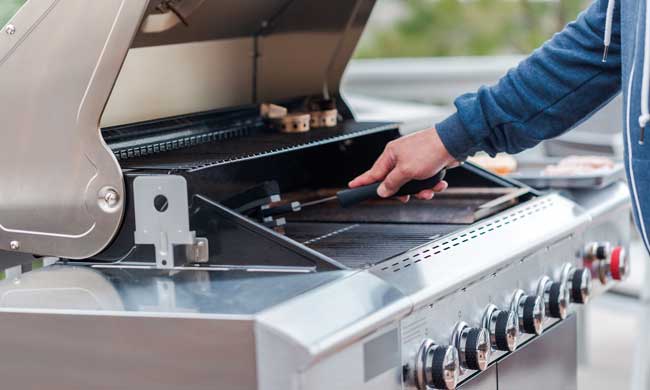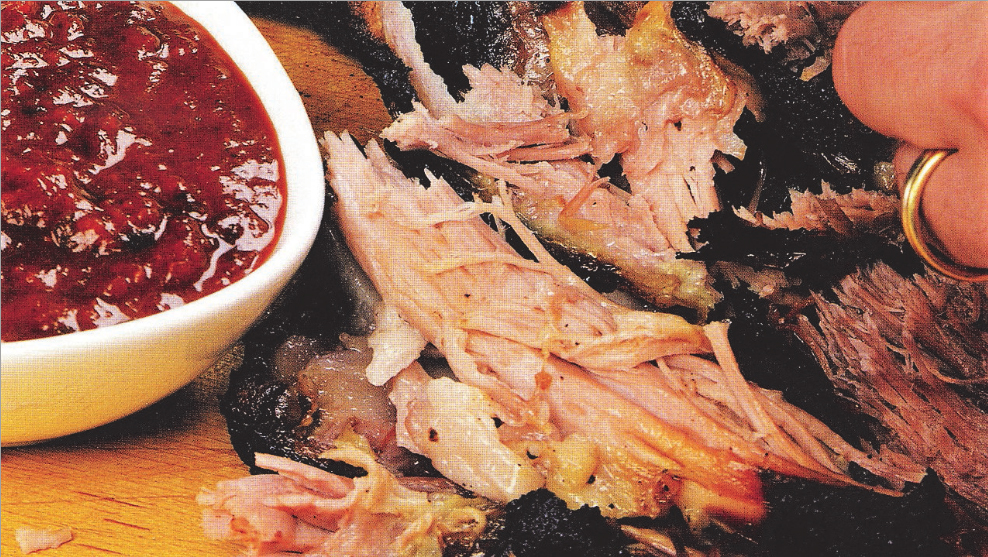Live Better
SMA and the new miracle drug Spinraza

Spinal muscular atrophy, or SMA, is a genetic disease that attacks nerve cells in the spinal cord. These nerve cells, known as motor neurons, communicate with the voluntary muscles in the body, such as those in the arms and legs. As more neurons are lost, muscles start to weaken and breathing, crawling, swallowing, and walking can become more difficult. It also can be difficult for those with SMA to control movements in their heads and necks. Though SMA runs in families, parents can exhibit no symptoms but still carry the gene. There are many types of SMA, and, according to the National Institute of Neurological Disorders and Stroke, the type of SMA is determined by the age of onset and the severity of symptoms. SMA Type I is evident at birth or within the first few months of a child being born. Symptoms may include difficulty swallowing, feeble movements of the arms and legs, loose limbs and trunk, impaired breathing, and a weak sucking reflex. SMA Type II is evident between the ages of six and 18 months, and the legs are typically more impaired than the arms. An early indicator may be a baby who is not crawling or walking. SMA Type III may be evident when a child reaches his or her toddler years, but sometimes does not appear until adolescence. When a child has SMA Type III, he or she may have trembling fingers and may experience difficulty getting up from a sitting position. Children with SMA Type II or Type III are at an increased risk of respiratory infections.
What causes SMA?
According to the Muscular Dystrophy Association, chromosome 5 SMA, the most common form of SMA, is caused by a deficiency of SMN, a motor neuron protein. This protein is necessary for normal motor neuron function, and a deficiency of SMN is caused by mutations on chromosome 5 in the SMN1 gene. Mutations in other genes may also cause SMA, and such cases are referred to as non-chromosome 5 SMA.
What are the symptoms of SMA?
There are various types of SMA, and the symptoms can vary depending on the type of SMA a person has. The following are some of the symptoms associated with the various types of SMA.
- Type 1: Type 1 is the most severe type of SMA. When a child is type 1, he or she may have difficulty supporting his or her head and sitting without help. Difficulty swallowing and weakness in the arms and legs may also occur. The muscles that control breathing also can be compromised when a child has type 1 SMA, and breathing problems can affect a child’s life expectancy.
- Type 2: Type 2 SMA typically affects the legs more than the arms. Type 2 SMA affects children between six and 18 months of age, and such kids may be able to sit, stand or walk with help.
- Type 3: The mildest form of SMA, type 3 may be referred to as juvenile SMA. Children with type 3 can often stand or walk without help, but they may have difficulty climbing stairs, getting up from a chair or running.
- Type 4: Type 4 SMA begins in adulthood, and men and women may experience muscle weakness, twitching or breathing problems. Physical therapy can help men and women better manage their symptoms, which typically only affect the upper arms and legs.
Recently the FDA approved an amazing new drug Spinraza to treat symptoms of SMA and prolong these life of individuals taking Spinraza. With a few injections, patients with SMA may be able to gain muscle strength and live longer by a year or more. It cost $125,000 an injection, and in the first two months one takes 4 injections in the spine. That’s half a million dollars for the first four shots. Subsequent costs for this possibly lifelong therapy are expected to be about $375,000 annually, with about three injections required each year. While this may seem extremely expensive the drug was developed to save lives, along with some resources available to help individuals requiring the drug. With coverage being more readily available to those effected the most, starting with SMA type I. Remember if you are trying to obtain Spinraza use every resource available at your disposal and educate yourself on the drug, available resources, and your healthcare. Don’t be afraid to ask questions and challenge your neurologist who would prescribe Spinraza along with your insurance representative, and if you have to, seek out a social worker for assistance. Be your own advocate. Take into account this drug has been developed and approved in a significantly short amount of time. Spinraza is for a relatively low percentage of the population, lots of money and resources were put into the development of this drug. For more information and resources go to SMAnewstoday.com. Remember to connect yourself with other individuals with SMA to share resources and connect with others who are going through the same thing you may be experiencing with SMA.
Parents can also learn more about SMA by visiting the Muscular Dystrophy Association online at www.mda.org & www.curesma.org
Live Better
5 tips for new pet owners

(Family Features) Welcoming a new pet is exciting, but preparation is needed to provide a loving home and enjoy the unconditional love.
Prepare your furry friend for a new home with these essential tips for first-time pet owners.
Choose the Right Pet for Your Lifestyle
Consider your living situation, work schedule and personal preferences. Research different breeds to find the one that matches your activity level, living space and family dynamics. Also consider any allergies or sensitivities you or your family may have as some pets may trigger allergies or asthma symptoms.
Set Up Your Home
Before bringing your new pet home, create a safe and comfortable environment. Start by pet-proofing your home, removing any hazardous substances and securing loose wires or cords. Make sure to store cleaning supplies, medications and toxic plants out of reach. Provide a designated space that includes a cozy bed or crate, food and water bowls and toys.
Create a Routine
Establish a consistent schedule for feeding, exercise and bathroom breaks. Determine the appropriate amount and frequency of meals for your pet’s age, size and breed. Spend quality time with your pet daily, providing attention, affection and mental stimulation.
Budget for Your Pet’s Needs
Owning a pet comes with financial responsibilities. Consider the costs of food, grooming, veterinary care, vaccinations and preventive medications. Additionally, factor in the cost of toys, bedding, litter and other supplies.
Find a Reliable Veterinarian
Regular check-ups and open communication with a local veterinarian can help detect any potential health issues early and ensure your pet receives the best possible care. Ask friends, family or neighbors with pets for provider recommendations and read reviews. Visit potential veterinarians’ offices to meet the staffs, tour the facilities and ask any questions you may have.
Find more tips for welcoming a furry friend into your home at eLivingtoday.com .
Photo courtesy of Unsplash
Watch video to find out how!
SOURCE:
eLivingToday.com
Live Better
6 steps to spring into lawn, garden care

(Family Features) If cooler weather has you longing for sunny days outdoors, take heart. Once spring rolls around, you can prepare your yard for months of warm-weather enjoyment with these tips.
Watch video to find out how!

- Clear the Yard
Remove any leaves, rocks or sticks that may have accumulated then cut the grass as short as you can.

- Dethatch
Use a thatching rake to remove dead roots and grass.

- Treat Weeds
Apply herbicide to treat weed-infested areas. Allow the weed killer to work for about a week then rake to remove dead weeds.

- Add Seed and Fertilizer
Depending on your lawn’s needs, overseed or spot seed to fill in thin spots. Use a grass variety that matches your climate for best results. Select and apply fertilizer consistent with your grass type then water thoroughly.

- Clear Garden Beds of Debris
Remove leaves and other matter that piled up in your garden during the cooler months. Gently turn the soil and work in fresh fertilizer.

- Start Planting
Early spring is the time to divide perennials and plant hardier vegetables, such as onions and potatoes. You can also start indoor seeds, if necessary, and move plants outdoors when the weather permits.
Getting some of your lawn and garden care underway now can make those warmer, sunny days feel closer in no time. Find more seasonal tips for prepping your yard at eLivingtoday.com.
SOURCE:
eLivingToday
Live Better
A how-to guide for deep cleaning your grill

(Family Features) A clean grill can enhance the flavor of your food, making regular grill maintenance an essential part of your outdoor cooking routine.
Grills, especially those exposed to the elements, can accumulate dirt, rust and food residue that can affect performance and safety. Plus, residual char and grease can impart unwanted flavors and even lead to flare-ups.
Once you’ve gathered the right tools – a sturdy grill brush with stainless steel bristles, a scraper, a bucket of soapy water, microfiber cloths and grill cleaner or degreaser – consult this step-by-step guide to keep your grill in pristine condition, ensuring delicious meals every time.
- Preheat the grill for 15 minutes to loosen any stuck-on residue then turn it off and let it cool slightly.
- Ensure the gas supply is turned off before cleaning.
- Remove the grates and scrub them thoroughly with a grill brush and warm, soapy water. Rinse and let dry.
- Clean burners by wiping them with a damp cloth.
- Scrape the inside of the grill to remove any debris and use a vacuum to collect loose dirt and ash.
- Wipe down the exterior of the grill with a microfiber cloth and grill cleaner.
- Reassemble the grill once all parts are dry and give it a final wipe down.
In between deep cleanings, remember to clean your grill grates immediately after cooking while they are still warm to remove food particles and grease. Find more tips for the grill and beyond at eLivingtoday.com.
Photo courtesy of Shutterstock
SOURCE:
eLivingtoday.com
-

 NEWS2 years ago
NEWS2 years ago2 hurt, 1 jailed after shooting incident north of Nocona
-

 NEWS1 year ago
NEWS1 year agoSuspect indicted, jailed in Tia Hutson murder
-

 NEWS2 years ago
NEWS2 years agoSO investigating possible murder/suicide
-

 NEWS2 years ago
NEWS2 years agoWreck takes the life of BHS teen, 16
-

 NEWS2 years ago
NEWS2 years agoMurder unsolved – 1 year later Tia Hutson’s family angry, frustrated with no arrest
-

 NEWS2 years ago
NEWS2 years agoSheriff’s office called out to infant’s death
-

 NEWS2 years ago
NEWS2 years agoBowie Police face three-hour standoff after possible domestic fight
-

 NEWS2 years ago
NEWS2 years agoDriver stopped by a man running into the street, robbed at knifepoint









